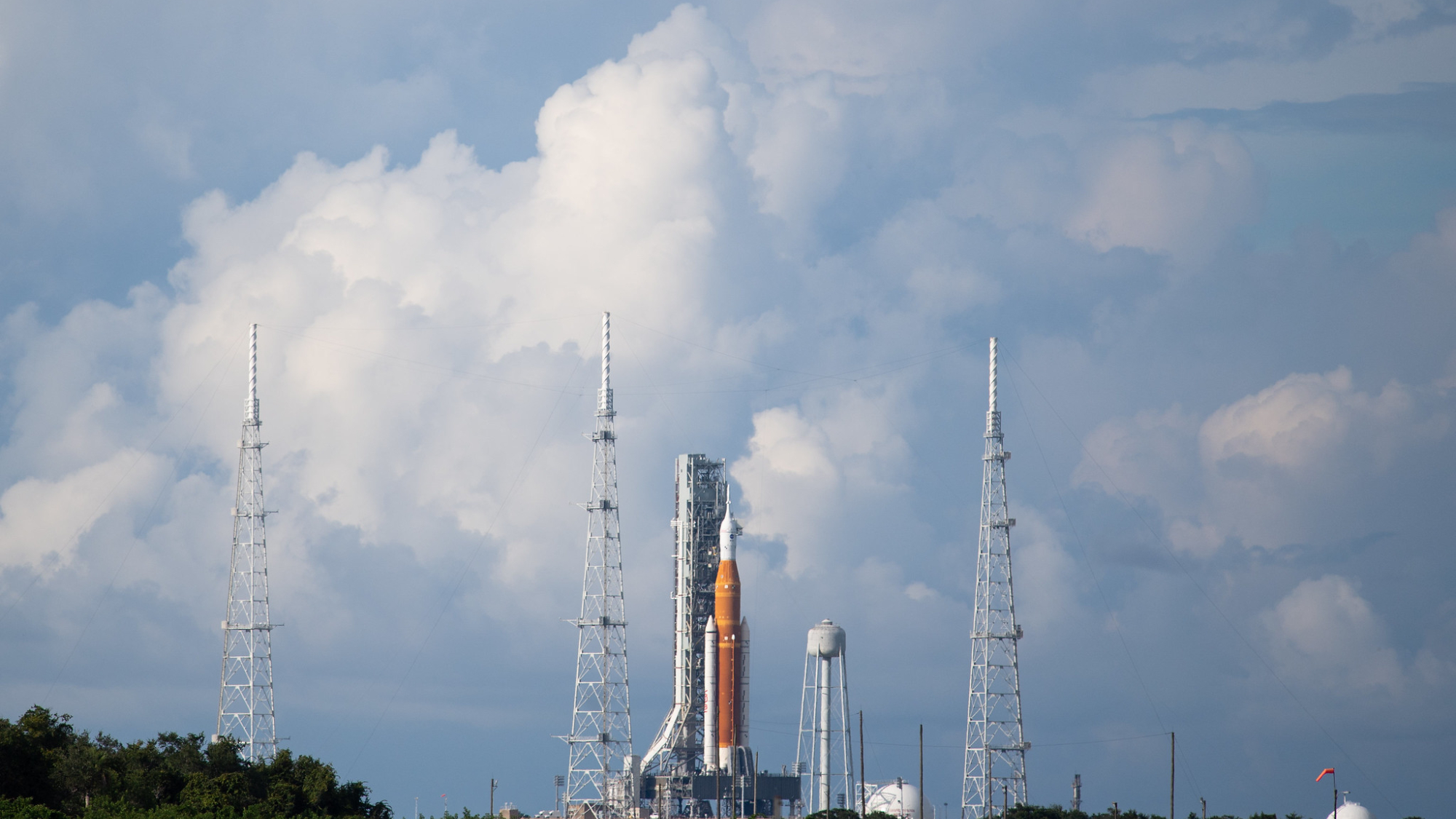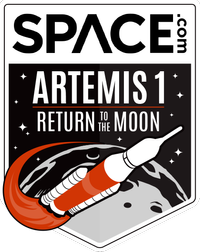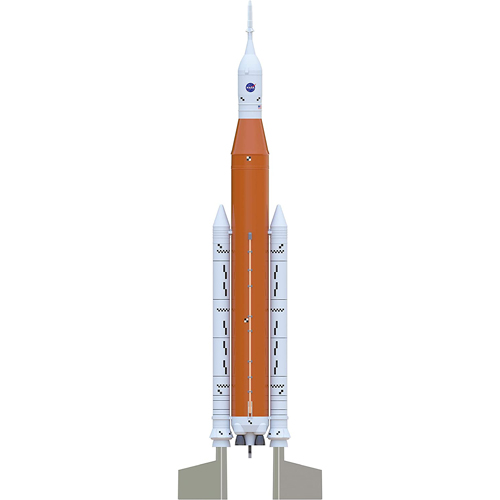NASA's begins countdown for Artemis 1 moon mission launch
The clock is ticking to the Artemis 1 moon mission launch on Aug. 29.


CAPE CANAVERAL, Fla. — The countdown is on for NASA's biggest test flight of the year.
At 10:23 a.m. EDT (1423 GMT) today (Aug. 27), the countdown clock began ticking down to the planned launch of NASA's Artemis 1 mission, an ambitious first flight to the moon by the agency's most powerful rocket ever — the Space Launch System (SLS) — and its Orion spacecraft. The uncrewed test flight is scheduled to launch Monday (Aug. 29) at 8:33 a.m. EDT (1233 GMT) from Pad 39B here at the Kennedy Space Center.
"This first launch is another step in the blueprint of our sustainable exploration of the solar system," Jim Free, NASA's associate administrator for exploration systems development, told reporters here in a briefing Friday. You can watch the Artemis 1 moon mission launch live online, courtesy of NASA TV. A live webcast will begin Monday at 6:30 a.m. EDT (1030 GMT).
Related: NASA's Artemis 1 moon mission: Live updates

You can launch a Space Launch System of your own with this Estes NASA SLS model rocket for a 1:200 scale version of NASA's moon megarocket. Read more about it.
Artemis 1 is the vanguard mission of NASA's Artemis program, which aims to return astronauts to the moon by 2025 and land the first woman and person of color at the lunar south pole, a region astronauts have never seen with their own eyes. The mission flight will send an uncrewed Orion capsule on a 42-day trip to orbit the moon and return to Earth to test if the spacecraft is ready to carry astronauts.
If this mission succeeds, NASA will follow it up with Artemis 2, a crewed trip around the moon in 2024, which will then lead to the Artemis 3 crewed lunar landing a year later. The ultimate goal, NASA has said, is to fly yearly missions to the moon after Artemis 3, stage crewed landings from a Gateway space station in lunar orbit and then aim for crewed flights to Mars.
There is a 70% chance of good weather for the Artemis 1 launch, with scattered rain showers as the main concern, according to NASA and the U.S. Space Force's Space Launch Delta 45 weather group. NASA has a two-hour window in which to launch Artemis 1 to allow for some wiggle room if Mother Nature doesn't cooperate.
Get the Space.com Newsletter
Breaking space news, the latest updates on rocket launches, skywatching events and more!
Related: Artemis 1: 10 wild facts about the NASA moon mission
During the two-day countdown for Artemis 1, NASA launch controllers will put the mission's 322-foot-tall (98 meters) Space Launch System megarocket and its Orion spacecraft through their final paces for flight. Engineers closed the hatch on the Orion capsule for the last time on Thursday (Aug. 25).
On Friday, engineers also closed the hatch on the SLS rocket's launch abort system, which sits atop the Orion spacecraft, and retracted the crew access arm astronauts will eventually use to board the spacecraft for future missions.
NASA will begin fueling the SLS rocket in the wee hours Monday morning, which NASA will webcast live at 12 a.m. EDT (0400 GMT). You'll be able to watch that event live on Space.com, courtesy of NASA TV, on our Artemis 1 webcast page.
Editor's note: This story was updated to include note that NASA's Artemis 1 launch countdown began as planned.
Email Tariq Malik at tmalik@space.com or follow him @tariqjmalik. Follow us @Spacedotcom, Facebook and Instagram.
Join our Space Forums to keep talking space on the latest missions, night sky and more! And if you have a news tip, correction or comment, let us know at: community@space.com.

Tariq is the Editor-in-Chief of Space.com and joined the team in 2001, first as an intern and staff writer, and later as an editor. He covers human spaceflight, exploration and space science, as well as skywatching and entertainment. He became Space.com's Managing Editor in 2009 and Editor-in-Chief in 2019. Before joining Space.com, Tariq was a staff reporter for The Los Angeles Times covering education and city beats in La Habra, Fullerton and Huntington Beach. In October 2022, Tariq received the Harry Kolcum Award for excellence in space reporting from the National Space Club Florida Committee. He is also an Eagle Scout (yes, he has the Space Exploration merit badge) and went to Space Camp four times as a kid and a fifth time as an adult. He has journalism degrees from the University of Southern California and New York University. You can find Tariq at Space.com and as the co-host to the This Week In Space podcast with space historian Rod Pyle on the TWiT network. To see his latest project, you can follow Tariq on Twitter @tariqjmalik.









